It's the first year Acantholimon androsaceum (Plumbaginaceae) flowers here. Not very showy yet but hopefully better next year!
Probably not androsaceum - look further down.
Comments
Re: Acantholimon
Hello fans of prickly buns, I have moved this topic from the "Family, Genera, Species" board to "General Alpines". :)
Re: Acantholimon
On that note...
Here's Acantholimon trojanum with it's tiny, first flowers - well, the calyces, anyway - last year in 2009 (none in our cold, rainy summer of 2010)...
I am just starting to try to expand my collection of these. Here are a couple grown from seed last year:
A. saxifragiforme - seeds from Pavelka (his description: "1600m, Urgup, Turkey: Dwarf dense silver cushions, short leaves 1-2cm, deep pink flowers on scapes 5-10cm; dry hills, very rare."
... and A. kotschyi ssp. laxispicatum, also from Pavelka (his description: "1600m, Kop Dag, Turkey; silvery-grey cushions, dark pink flowers on scapes to 15cm; dry stoney hills; 2008 seed."
Just after germination, and at planting-out time.
I wonder how long it will take these to bloom from seed?
Re: Acantholimon
It's great seeing the difference between Acantholimon cotyledons and the young spiky rosettes starting to develop. Years ago I grew a bunch of Acantholimon, but no longer have any in my current location. They are intriguing cushion plants.
Re: Acantholimon
Lori,
how do you germinate the things!??
My sole plant came as a seedling from a friend but I've had no success with them - either from the Seedex, commercial seed-sellers or fresh garden seed.
cheers
fermi
Re: Acantholimon
Acantholimon seed is difficult to germinate. Some of the seed is simply not viable, and other seed appears to be ephemeral. On the other hand, some of the seed appears to germinate better after a year in storage. In short, it's a crap-shoot with this genus, so every year I plant a bunch, and every year I get a few. Right now I've 2 plants of Acantholimon acerosum that are about 8 years old, and a couple of others whose names escape me at the moment that are 3 or 4 years old. I learned that in this climate Acantholimon generally need to be sited carefully, away from rocks, to give them the best opportunity to dry off after a rain, or to keep the humidity moving off the plants in the summer. Moisture also tends to collect under the plant in the humid period of the summer, often leading to rot, so I'm very careful to build up about 1 1/2 inches of gravel under each bun and renew it in the spring. When the plants come in contact with soil they rot here, and I've lost several beautiful 2 foot buns in past years. I have no idea what the normal life expectancy of these are, but I recall reading something that Bob Nold wrote, indicating that they live for a while and then just die! No particular reason, other than their lifespan has run its course. Any information about their life expectancy would be helpful.
Re: Acantholimon
Hi, Fermi,
Both Acantholimon kotschyi ssp. laxispicatum and Acantholimon saxifragiforme took 5-7 days to germinate in warm conditions, no pre-treatment. In both cases, the seeds I received looked like dried flowers, which I sowed on top of moist medium, and set under lights in my plant stand in the basement.
NB. I had not tried these before, I don't think, and it was very likely beginner's luck in that case!
Re: Acantholimon
The most excellent thing about acantholimons (and no one has mentioned it), is that they absolutely are not eaten by the antlered rats. They do occasionally paw one apart trying to find something edible. They are also beautiful but some need quite a bit of space. All my pictures are slides so I'll have to photograph them this year.
Re: Acantholimon
Lori, if you hadn't stated otherwise I had presumed that your seedlings were conifers!
Re: Acantholimon
Acantholimon are something of a specialty for us in Denver: most are xerophytes that can grow to immense sizes if they are happy (we have had some over a yard across). They make a spectacle in midsummer.
The one best suited to smaller rock gardens, tolerating some irrigation (or rainy climates) is Acantholimon capitatum, also sold as A. bracteatum ssp. capitatum. In the attached picture you can see a specimen alongside Hirpicium armerioides (which towers over it on the left hand side: this is a tiny African daisy actually). The red flag is Papaver rhoeas, and the pale pink in the foreground is Rosularia libanotica. The Dark green mass is Daphne x susannae 'Anton Fahndrich', in front of which on the far left is the gray, cut foliage of Salvia caespitosa. If you can grow these, you can probably grow the drumstick spikethrift as well. Worth any effort in my opinion!
Re: Acantholimon
Very nice! And true to its name, I have never seen one with capitate heads of bloom, sort of Armeria-like.
Checking IPNI.org I see almost 400 names listed for Acantholimon, assuming even half of them are valid that still makes for a large genus. And so I slump into my botanizing armchair and take it for a slow meander through the wilds of Asia, to find some good links.
I know that Central Asia and Eurasia are rich in species, only relatively few listed for China, but I found some drawing in Flora of China that are worth a gander (illustrating Acantholimon tianschanicum, diapensioides, borodinii, kokandense, alatavicum):
http://www.efloras.org/object_page.aspx?object_id=1769&flora_id=2
I wonder what the "beautiful headed" Acantholimon calocephalum from Pakistan and Afghanistan looks like? Sounds like another capitate headed type.
Search Acantholimon on Marijn van den Brink's fantastic plant photo galleries. It occurs to me that the value of these plants seems primarily for the impressive spiny hummocks they can create:
http://photos.v-d-brink.eu/search/index.mg?searchWords=acantholimon&sear...
...some selected links from the Marijn van den Brink galleries:
Acantholimon sp. Iran
http://photos.v-d-brink.eu/Flora-and-Fauna/Asia/Iran-Koppe-Dag-nieuw/145...
Gypsophila aretioides and Acantholimon species growing in each other, has to be seen to be believed:
http://photos.v-d-brink.eu/Flora-and-Fauna/Asia/Iran-Koppe-Dag-nieuw/145...
Acantholimon sp. Iran, Zagros Mountains
http://photos.v-d-brink.eu/Flora-and-Fauna/Asia/nieuw-Iran-Central-Weste...
Acantholimon embergeri 2500m, Iran, Elburz mountains
http://photos.v-d-brink.eu/Flora-and-Fauna/Asia/Iran-Elburz-mountains/10...
http://photos.v-d-brink.eu/Flora-and-Fauna/Asia/Iran-Elburz-mountains/10...
Re: Acantholimon
Just looked at this string again: the one that began it (by Hoy) was supposedly a picture of Acantholimon androsaceum: I believe that is incorrect. A. androsaceum (sometimes classed as A. ulicinum) has stemless flowers. This one is clearly stemmed. It could be any one of several dozen species I have grown...I will not venture a guess. But I would not label it androsaceum any longer...
Compare with Nick Turland's fantastic image from his Flickr account:
Re: Acantholimon
Just looked at this string again: the one that began it (by Hoy) was supposedly a picture of Acantholimon androsaceum: I believe that is incorrect. A. androsaceum (sometimes classed as A. ulicinum) has stemless flowers. This one is clearly stemmed. It could be any one of several dozen species I have grown...I will not venture a guess. But I would not label it androsaceum any longer...
Compare with Nick Turland's fantastic image from his Flickr account:
Kelaidis, if you say so I do believe it! But the name I provided is the name I bought it with. However I have no problems changing it - it is the only one I have of the genus ;)
Re: Acantholimon
I think these pictures are Acantholimon androsaceum. They are growing in sand bed and scree and seem to be long-lived. There is usually some winter damage seen on the foliage but it repairs itself by mid-summer. The flowers are a good pink and are stemless.
Re: Acantholimon
I think these pictures are Acantholimon androsaceum. They are growing in sand bed and scree and seem to be long-lived. There is usually some winter damage seen on the foliage but it repairs itself by mid-summer. The flowers are a good pink and are stemless.
Excellent Anne, looks like the real McCoy, a pretty thing isn't it. I grew this many years ago, and as I recall, it looked similar to your plant with nearly stemless flowers, although mine never grew very wide. I like these just for the cushions, even if this one is not the showiest in bloom.
I find it educational to see how plants look in the wild, and there are some good photos of this species on Marijn van den Brink's photo galleries. What is interesting to see, is how the older leaves are an orangish-brown color, only the central terminal growth retains green leaves. These photos from the Greek Peloponnese look like they were taken in the autumn:
http://photos.v-d-brink.eu/Flora-and-Fauna/Europe/Greece-Southern-Pelopo...
http://photos.v-d-brink.eu/Flora-and-Fauna/Europe/Greece-Southern-Pelopo...
http://photos.v-d-brink.eu/Flora-and-Fauna/Europe/Greece-Southern-Pelopo...
Re: Acantholimon
Here's an excellent series of photos on Acantholimon androsaceum from the "Visit West Crete" tourist web site:
(in the first photo, the brown ball-shaped objects are not flowers ;D)
http://www.west-crete.com/flowers/acantholimon_androsaceum.htm
Warning: you might want to use goggles to view the spiny close-up shots.
Re: Acantholimon
Found this photo of an Acantholimon on a wikipedia site, as Acantholimon sp.
A beautiful flowering specimen.
http://upload.wikimedia.org/wikipedia/commons/f/f7/Acantholimon_sp._S.jpg
Re: Acantholimon
Here's an excellent series of photos on Acantholimon androsaceum from the "Visit West Crete" tourist web site:
(in the first photo, the brown ball-shaped objects are not flowers ;D)
http://www.west-crete.com/flowers/acantholimon_androsaceum.htmWarning: you might want to use goggles to view the spiny close-up shots.
Great site, Mark. I see the acantholimon is receiving some fertilization!
Re: Acantholimon
That was an extremely informative site to post, Mark! It explained something that I had been puzzled over... which is that what I had taken to be tiny "flowers" on one of my plants, were just the calyces. It seemed to me that there were actually two forms of flowers - e.g. male, female, maybe? - but now I get it! :) It may be that my young plant didn't really bloom, or that I missed it, and only saw the developing calyces. Thanks for posting it!
(It also explains why the "seeds" look like "flowers"; they are encased in the dried calyces.)
Re: Acantholimon
I see the acantholimon is receiving some fertilization!
Yes, evidently, some sheep/goat is obliging!
Re: Acantholimon
Warning: you might want to use goggles to view the spiny close-up shots.
It is difficult with goggles and glasses, Mark ;)
But what about gloves?
Re: Acantholimon
Tried them a couple of times and no go in my area...just too wet.
Re: Acantholimon
That was an extremely informative site to post, Mark! It explained something that I had been puzzled over... which is that what I had taken to be tiny "flowers" on one of my plants, were just the calyces.
But the dried calyces are pretty, too. This bouquet is 5 inches tall.
Acantholimon hohenackeri calyces
Re: Acantholimon
Not bad, Rick! That one I could offer my wife :D
Re: Acantholimon
So, what Acantholimon is shown in these two photos?
http://photos.v-d-brink.eu/Flora-and-Fauna/North-America/America-Oregon/...
http://photos.v-d-brink.eu/Flora-and-Fauna/North-America/America-Oregon/...
Not an Acantholimon, but Leptodactylon pungens at Crater Lake National Park, Oregon. Obvious calyx differences, but Leptodactylon surely looks like an acantholimon.
(fine photos by Marijn van der Brink)
Re: Acantholimon
Leptodactylon certainly seems to share the prickly charm of Acantholimon! Is it fair to conclude that they are a bit longer-stemmed and less mounding than the latter? (I can only guess from photos (and one captive specimen ;)), never having seen one in the wild!)
I was pleased to find, last year, that Leptodactylon pungens ssp. pulchrifolium was hardy enough to survive a couple of winters here. I wonder what this year will bring?
Leptodactylon pungens ssp. pulchrifolium - a plant bought from Beaver Creek Greenhouses:
Re: Acantholimon
I like these Phlox relatives (Leptodactylon) and have always wanted to grow them, congratulations on getting yours to persist for a few years and flower. Check out the CalPhotos on L. californicum for an eyeful. But I digress, as these aren't even the same family as Acantholimon (Plumbaginaceae), they're in the Polemoniaceae, but it is amazing how some plants from one family can imitate plants in a completely different family.
Re: Acantholimon
There was a time when I grew Acantholimons superbly: that was at my previous house (where they persist) on a clay based soil. They are not crazy about my dry, sandy xeriscapes (much to my surprise). I have nowhere nearly as good of displays here. But I have a few pix from the last frew years that are worth sharing.
1) Acantholimon bracteatum var. capitatum does well in my rock garden (where it gets regular watering, incidentally). It is highly distinctive with the clustered flowers. This is one of the more compact species. I recommend this heartily to anyone in sunny, typical rock garden conditions. The type form (var. bracteatum) was much bigger and spreadier and I have lost it. I miss that one!
2) Acantholimon trojanum in my rock garden as well: it has persisted better than most of the androsaceum/ulicinum group, which I love but which are a bit fussy. This is tighter than most of these and has persisted in the watered rock garden.
3) Acantholimon herd of vegetable sheep in Dare Bohlander's garden: just took this the other day. Isn't it charming? Dare is a first rate gardener and superlative designer. These clumps are masses of bloom in the summer.
I have scads of unscanned slides of huge mounds of Acantholiomons I once grew. We still grow them like that at the Botanic Gardens, but I forget to photograph them. Love this genus!
Re: Acantholimon
PK, nice seeing a photo of A. bracteatum var. capitatum again, a first class acantho! Probably worth growing for the foliage alone, but with this species the congregation of florets into a head is unique and pleasing.
The photo of "Acantholimon herd of vegetable sheep in Dare Bohlander's garden" appears as an excellent example of a rock garden that isn't attempting to recreate a part of the Alps in miniature, but instead is a comfortable and pleasing "terrain" topped with variable sized rock mulch; there's natural serenity to the scene with those gorgeous low hummocks of foliage. The scene inspires me (although I pretend the cacti aren't there ;)).
Re: Acantholimon
They're fun to set on fire, too, when dead.
I was actually relieved when the acantholimons here decided to call it a day. They had gotten so large they were growing into each other and looked fairly disgraceful.
They make lots of acrid smoke that lasts for about half an hour.
Bob
p.s You can tell which seeds are viable by looking at the tube; thin ones aren't viable.
Re: Acantholimon
They're fun to set on fire, too, when dead.
I was actually relieved when the acantholimons here decided to call it a day. They had gotten so large they were growing into each other and looked fairly disgraceful.
They make lots of acrid smoke that lasts for about half an hour.Bob
p.s You can tell which seeds are viable by looking at the tube; thin ones aren't viable.
Maybe they (Acantholimon) should've duked it out with your romping out-of-control sempervivums that devoured your garden ;D
Burning Acantholimon hummocks and acrid smoke, sounds like a nightmare. Why were they set on fire? At least with Dictamnus (ignitable Gas Plant), the action of ignition is not of permanent detriment to the plant.
Re: Acantholimon
Fire?
I wish I would have know that. I just had a one foot wide one croak this winter.
It would have been fun. Setting an individual prairie plant ablaze is a blast, albeit a very short lived escapade. 8)
Re: Acantholimon
I remember a picture Jim Archibald showed of a Turkish Villager with a huge mound of dead acantholimons behind the house for winter "firewood": they do produce heat with all the resins in their foliage which can get hot indeed.
I'm off to California for a few weeks so I shan't be posting much for a while...Hope everyone is well,
PK
Re: Acantholimon
I remember a picture Jim Archibald showed of a Turkish Villager with a huge mound of dead acantholimons behind the house for winter "firewood": they do produce heat with all the resins in their foliage which can get hot indeed.
There's the answer. There should be some fun in gardening along with all the disappointment and misery .....
They catch fire, release massive quantities of acantholimon smoke, then glow very satisfyingly for quite some time.
Bob
Re: Acantholimon
I've never grown these plants well, and hardly ever had a flower. That last photo of Panayoti's is superb and makes me want to start rock gardening all over again. Curious since all the plants are pretty much the same and there are no flowers! I think, like Mark says, it is comfortable and pleasing and you could imagine being on a hillside in Turkey.
Re: Acantholimon
There's the answer. There should be some fun in gardening along with all the disappointment and misery .....
They catch fire, release massive quantities of acantholimon smoke, then glow very satisfyingly for quite some time.Bob
Okay, I'll give you that one Bob, we'll add Acantholimon to the growing list of pyrotechnic plants; only Acantholimon and Dictamnus so far, I wonder if Burning Bush literally burns? So I checked, lo and behold, check out this list of "HIGHLY flammable plants":
http://www.state.sc.us/forest/scplants.pdf
Burning Bush falls short of its namesake by being listed as "LESS Flammable Plants with some fire resistance", so is Pyracantha (firethorn)..., go figure! ;D
While I jest, the topic of "Firewise Landscaping" is actually a serious one, and many States and counties put out such plant lists.
Re: Acantholimon
This one is proving to be fairly interesting... Acantholimon kotschyi ssp. laxispicatum (seed collected by Pavelka from Kop Dag, Turkey, 1600m elev.), from seed in 2010 to bloom in 2011:
Re: Acantholimon
Nice success story Lori, the zig-zag stems are elegant, and I like the seed heads too, a second show!
Re: Acantholimon
Lori, that one was very nice!
Mark, even the common juniper (Juniperus communis) is highly flammable - or should I say inflammable ;)

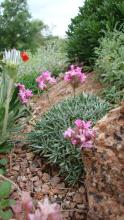
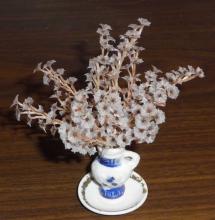
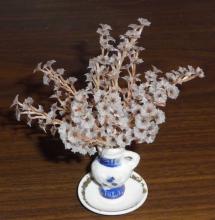
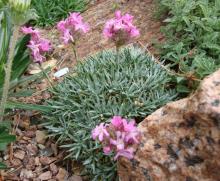
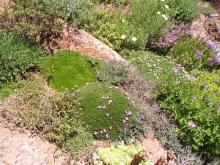
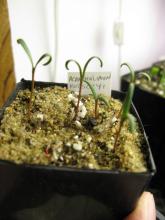
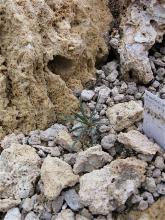
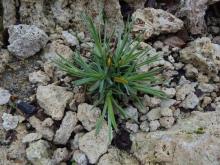
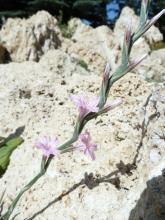
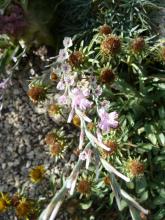
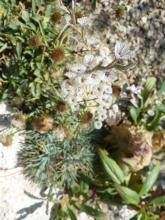
That looks very nice! The flowers are quite large.
This Acantholimon trojanum bloomed sparingly last year with tiny* flowers - I'm interested to see what it will do this year, if anything.
* Actually, I finally realized that I had missed the actual flowering and only saw the remaining calyx!